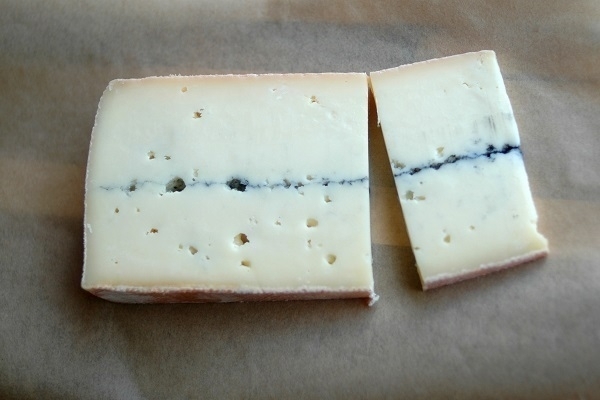Morbier

From a cheese coated in ash, to another with a layer of ash inside it: Morbier. I bought the slice of it shown above at the local Tesco. In most modern Morbier, the ash is no more than a vestigial remnant of the way the cheese was originally made, when an ash-layer served the purpose of protecting a part-filled mould of curds until it could be topped up.
Florence Arnaud, writing in The Oxford Companion to Cheese tells us that Morbier dates at least as far back as the late 18th century, but that only as recently as 2002 was it made subject to AOC rules in an effort to re-associate the cheese with its original terroir in the Haut-Jura region of eastern France. She adds that “It should be left at room temperature for at least thirty minutes before being eaten so that it can reveal all its aromas, with fruity, yoghurt, vanilla, milky, and even fudge being the most notable”. I confess I tend to be too eager to consume the stuff after removing it from the fridge and seldom give those aromas their proper due. I should be more patient.
It’s a mild cheese: pleasantly subtle rather than bold. Earlier this year I tried some Ashcombe – an English cheese modelled on Morbier. It was excellent, with a good deal of depth and complexity, albeit at a considerably higher asking price than the Tesco Morbier. Doubtless in France there’ll be more sophisticated artisanal examples of the style which are at least as good as the Ashcombe.